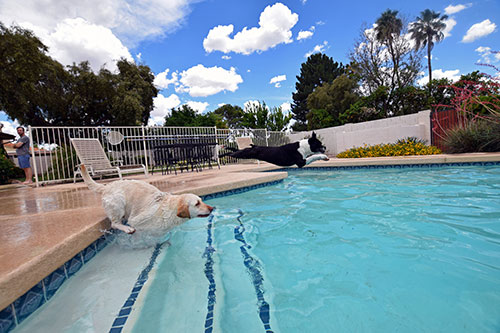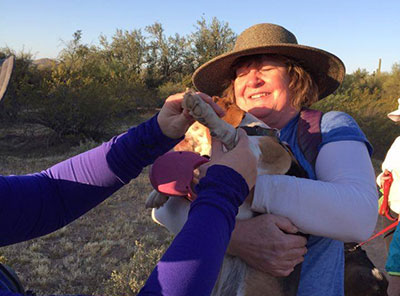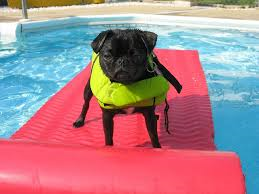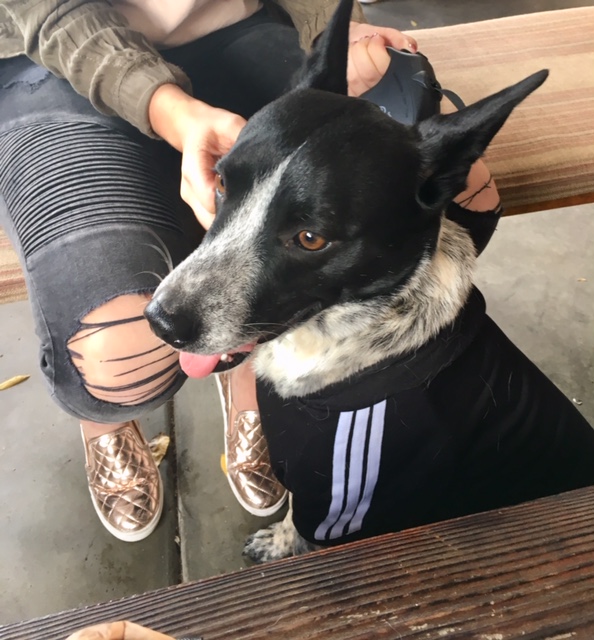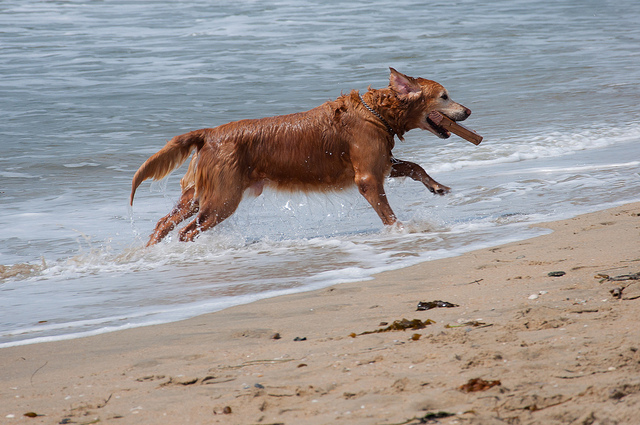
Via Flickr – by John Liu
Well, realistically speaking, we are halfway in the summer season in metro Phoenix. Let’s be honest, the thermometer doesn’t budge until October in Phoenix. Guest blogger Vee Cecil does a great job in reminding us to keep safe out there.
You may be thinking about how to squeeze in another vacation before you have to get back to the daily grind of the rest of the year. And if you have a pet, you may be among the 53 percent of pet owners, who according to TripAdvisor.com, bring their pets along with them when they travel.
While traveling with the family is certainly enjoyable for you and your pet, it’s important to remember that they are vulnerable to many other dangers once they leave the safety of your home. Here’s some advice on how to keep your four-legged family members safe when you travel:
At the pool. Many dogs love to swim and it truly is great exercise for them. That said if your vacation destination allows dogs to swim, it’s important to use caution when they’re in an unfamiliar pool.
First, be sure your pet knows how to get out of the pool. On his first swim, train him to find the stairs. Second, be sure the pool’s chemicals and other cleaning supplies are kept where you pet can’t get to them. This list of pool chemicals shows what chemicals are needed to clean a pool and how they’re used. It also gives a good indication of just how toxic they are. If your dog comes into contact with these chemicals or ingests them it can be very dangerous. You’ll also want to make sure the chemical levels in the pool aren’t so high that they harm your pet. Be on the look out for red eyes, which can be an indication of over-chlorination, and rinse your pet off with fresh water when he’s done swimming.
At the beach. Dogs enjoy a day at the beach as much as humans, but if you’re bringing yours along with you be sure to take a few precautions. Dogster.com provides several great tips about beach safety for dogs. For example, it stresses the importance of always keeping an eye on your dog. It would only take a split second for you to lose track of them on a crowded beach. And be aware of the dangers associated with swimming in the ocean. If your dog isn’t a good swimmer, it’s best to not let them go in too far, to have them wear a doggie swim vest, and to be on the lookout for ocean creatures, such as jellyfish and stingrays.
On the trails. If you’ll be camping or hiking in the great outdoors with your dog in tow, it’s important to know how to keep them and other hikers safe on the trails. Appalachian Mountain Club (AMC) offers some do’s and don’ts for hiking with your dog. AMC notes that the weather should always be a consideration. If it’s hot and humid, don’t over do it. Choose an easier trail, and preferably one that ends with a pond or lake where your dog can cool off. Another great tip: keep your leash handy. AMC explains that you’ll want to have your dog on a leash when you encounter other hikers or if you happen to run into a loose dog on the trail.
At the dog park. If you’re opting for a staycation, there are still plenty of opportunities to get out and about and play with your dog. For example, you might try one of these dog parks in Phoenix. Just be sure to follow dog park safety and etiquette as set out by the ASPCA. In this article on dog parks, in addition to other helpful information, the organization advises that upon arrival you always check to make sure fencing and gates are secure, make sure there’s plenty of shade and access to fresh water, and always, always watch your dog so that you can quickly step in if their play with another dog takes a bad turn.
There’s no reason every member of the family (even the furry ones!) can’t enjoy a great vacation. If you do plan to bring your dog with you on your end-of-summer travels, just be sure to take the necessary steps to keep them out of harm’s way.
Vee Cecil is passionate about wellness. She often studies the topic and shares her findings on her recently-launched blog. She is also a Kentucky-based wellness coach, personal trainer, and bootcamp instructor.

